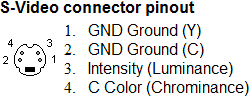Wiring Panel for Structured Wiring
The Wiring Panel is the heart of any Structured Wiring job. You should have already chosen the location of your wiring panel when you created your Wiring Plan. This should probably be placed in the basement if you have one. Otherwise, a closet will work too. The benefit of proper structured wiring plan is that all wires terminate in one location - your wiring panel. This makes it much easier to change your setup and to diagnose and repair problems.
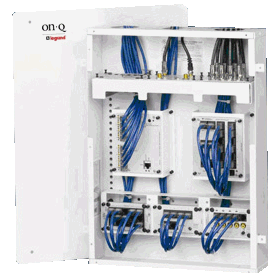
Purchasing a wiring panel can add a professional finish to your work, but they can also be expensive. The empty panel might start as low as $50, but you end up getting trapped into using their overpriced modules for phone, cable, and Internet distribution. I was able to find a standalone 24 port Internet switch for less than the cost of a Leviton 4 port hub. If your wiring panel will be visible (it is located in a closet or small room) then you might want to go with a real wiring panel like the one shown above. Since my wiring panel is hidden in an unfinished closet in the basement, I prefer to save the money and just mount everything to the wall. The wires are visible, but it also has more room makes it easier to move things around.
Any non-electrical wires from outside the home should be run to the wiring panel. As you can see below, most companies are trying to offer the big 3 services (phone, TV, & Internet). Having all wires start from the same location makes it easier to switch between companies. Everyone is always offering a better deal for new customers to get them to switch. The panel will then distribute these to the rest of the home. This includes:
- Cable - TV, Phone, or Internet
- Phone - Phone or Internet
- Satellite - TV or Internet
- Fiber - TV, Phone, or Internet
- Antenna - TV
For example: Cable companies provide a special cable modem to provide Internet services. Normally, they would want you to have a cable connection near your computer. They would then place the cable modem near your computer, run the cable wire to the modem, and then the Internet Cat5 cable from the modem to your computer. If you wanted 2 computers connected to the Internet, you would then have to run a wire from that modem to the computer in a different room.
With a structured wiring plan, the cable modem is located at the wiring panel in the basement. The incoming cable is run to the cable modem. The Cat5 cable is then run to a Internet switch which can then distribute the Internet throughout the home. A typical wiring panel will contain a Cable or DSL modem, a Internet switch, a WiFi router, phone splitter, TV / satellite splitters, and an alarm panel.
Before cutting any wires, do a rough layout of where each switch, splitter, switch, and panel will be. I like to start at the top with the wires coming in from the street, then the grounds, then splitters at the bottom.
Terminating Connections
Phone
There are two methods of connecting phone lines at the wiring panel. The standard method is to use a punch block. Depending on the model, each connector in a column (or a row) is connected. For each phone wire, punch down all the strands of the same color in the same column. Make sure to also connect the incoming phone wire from the street. Note: Not all punch blocks will have every connector in a column pre-connected together. If they don't you will have to connect them together yourself.
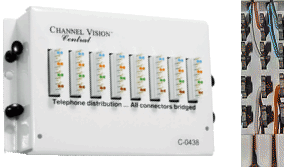
The second method for phone distribution is to simply buy a multi-port phone splitter.

Each wire must be terminated with a 6 pin phone connector. A special crimping tool and phone connectors are required to do this. Each wire in the braid is inserted through its own hole in the connector, then the wires are crimped to hold them in the connector. Finally, the excess wire is trimmed from the end of the connector. Only untwist as little wire as necessary.
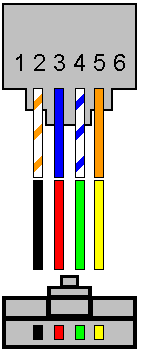
| Pin | Phone Color | Cat3/Cat5 Color |
|---|---|---|
| 1 | Green Stripe | |
| 2 | Black | Orange Stripe |
| 3 | Red | Blue |
| 4 | Green | Blue Stripe |
| 5 | Yellow | Orange |
| 6 | Green |
If you have a DSL modem, then you will need to filter out the phone signal from the DSL line. The phone company might give you a filter to place at each phone jack. With structured wiring, you should only use one splitter that is located at the wiring panel. The splitter will output a DSL line (which goes straight to the DSL modem) and a phone line which goes to the phone punch down block. Wiring the DSL splitter right at the wiring panel means you don't need a special filter for each phone.
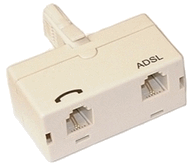
Internet
Multiple Internet connections requires a network switch. The Cat5 output of your Cable or DSL modem should connect to one of the jacks in the network switch. Then, the Cat5 from each room connects to another port in the switch. Note: Some switches have a special port for incoming connection from the modem. Read your documentation.

Each Cat5 wire must be terminated. There are 2 wiring standards for Cat5: T568A and T568B. It doesn't matter what standard you use as long as you use the same for both ends of the wire. Crimping end connectors for Cat5 is the same as phone wire. A special crimping tool and Cat5 connectors are required. Each wire in the braid is inserted through its own hole in the connector, then the wires are crimped to hold them in the connector. Finally, the excess wire is trimmed from the end of the connector. Be sure to only untwist as little wire as necessary.
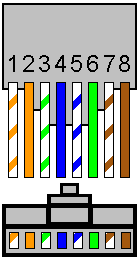
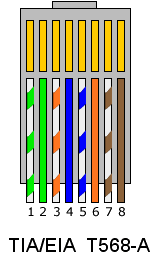
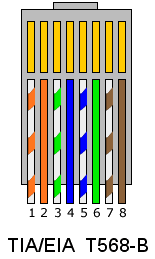
| Pin | T568A Color | T568B Color |
|---|---|---|
| 1 | Green Stripe | Orange Stripe |
| 2 | Green | Orange |
| 3 | Orange Stripe | Green Stripe |
| 4 | Blue | Blue |
| 5 | Blue Stripe | Blue Stripe |
| 6 | Orange | Orange |
| 7 | Brown Stripe | Brown Stripe |
| 8 | Brown | Brown |
Coaxial Cable
Use a Coaxial Splitter to distribute an incoming cable connection. If you have satellite, you will need a special satellite multiplexer to split the cables.
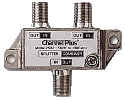
For coaxial wires, you must crimp on a coax connector before connecting it to the splitter. Do not use the twist on connectors. You can use a standard wire stripper to strip the coaxial cable, but a custom coax stripper will give you a perfect cut. After stripping the wire, push the braid back on the wire and then crimp on the connector. The white insulator should just be visible inside the connector. Be sure to get the correct RG6 (not RG59) connectors. Make sure that the braid and the inner core do not touch.
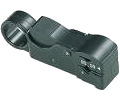

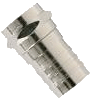
All coaxial wires (cable or satellite) coming in from the street should be grounded. Most splitters have built in ground connections, but if they don't you can use a separate grounding block. If the builder hasn't already provided a ground, you will need to run a copper wire from your copper water pipe to under the screw on the grounding block.
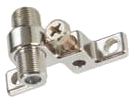
S-Video Cable
S-Video cable is a made up of two small coaxial cables in a single jacket cable. The 4 pins on the S-Video cable include the center cable of the two coaxial cables (both Y & C) and the ground or outer shield of each cable. Cheaper S-Video cable might not use true coaxial cable and will not have the white insulation around the center core. This cable is fine for shorter S-Video runs.
